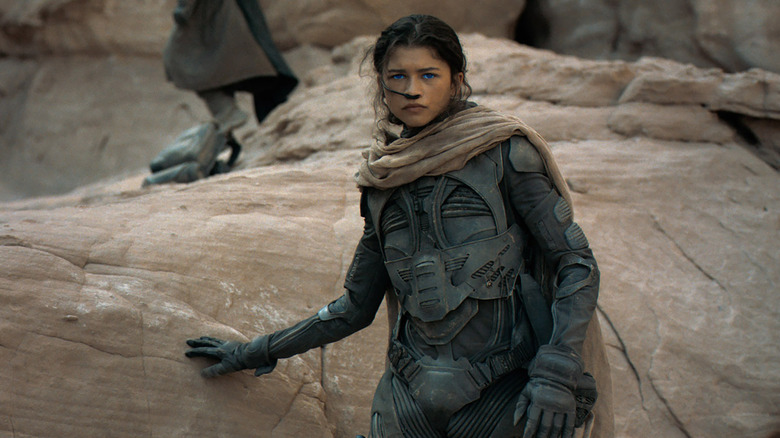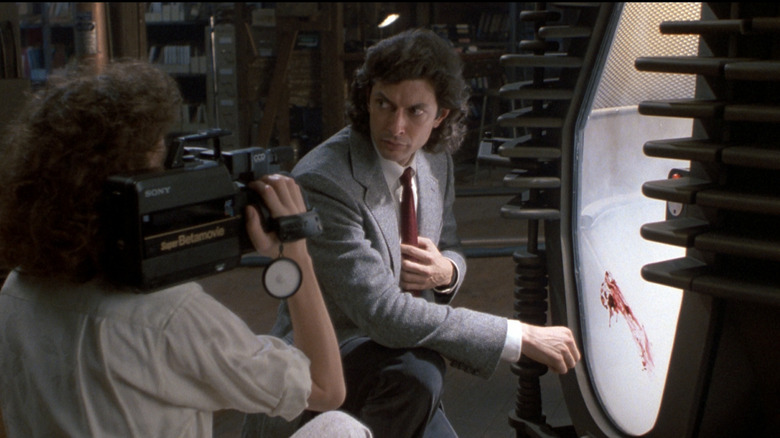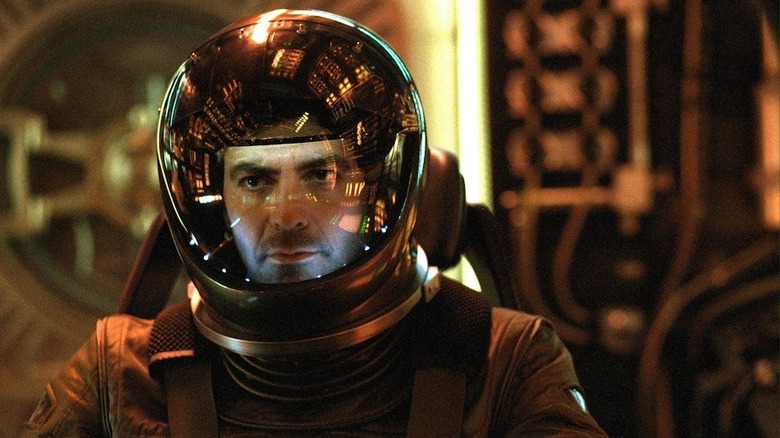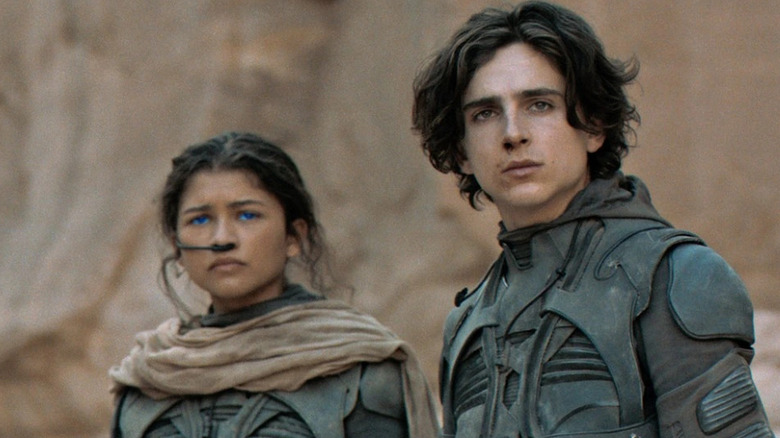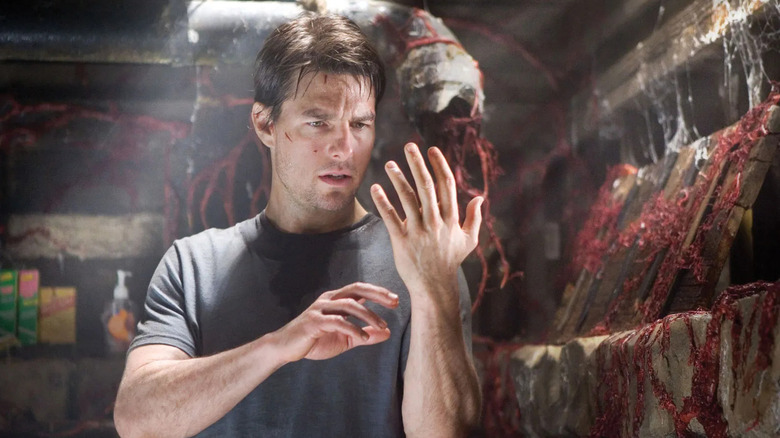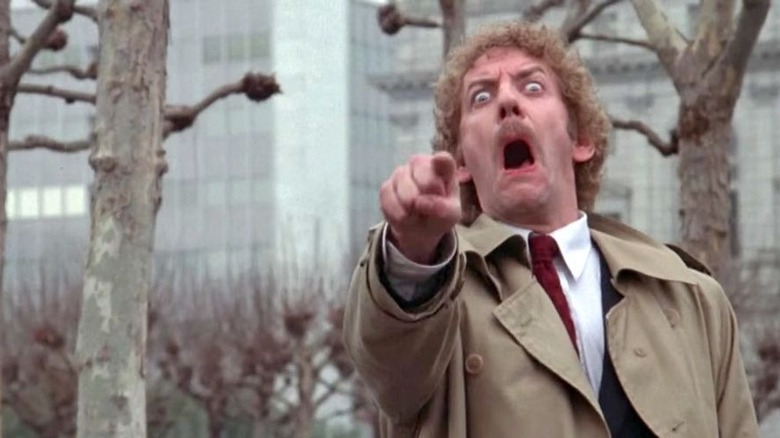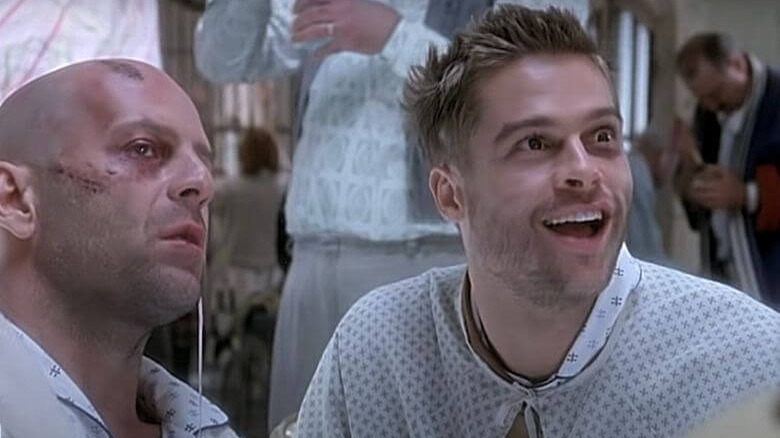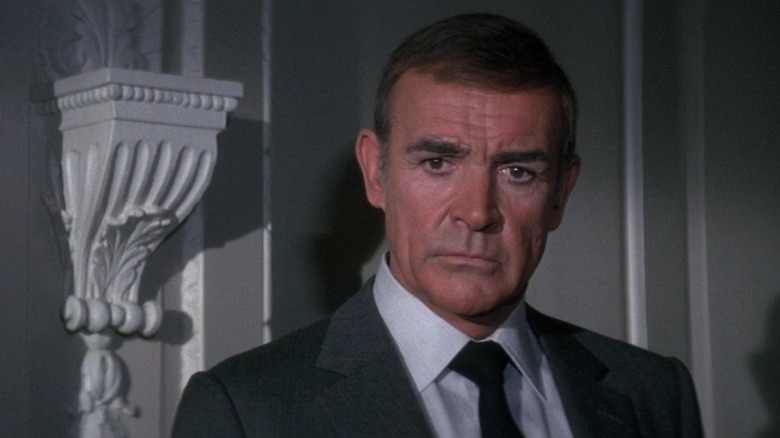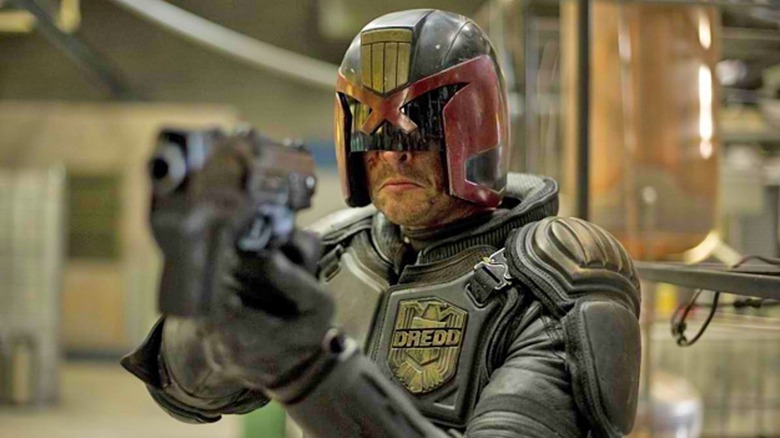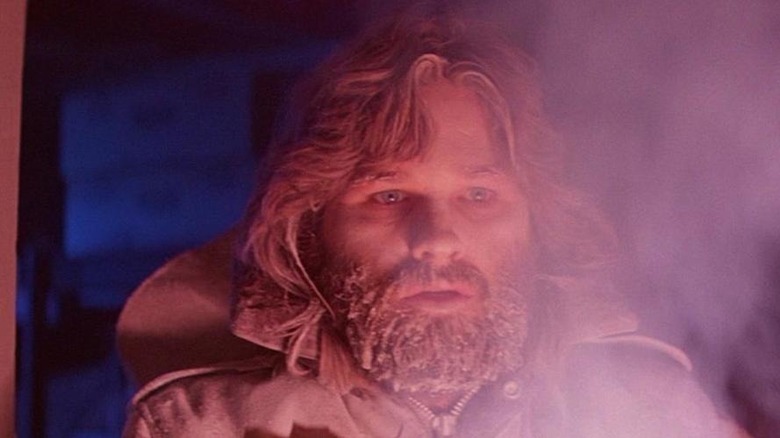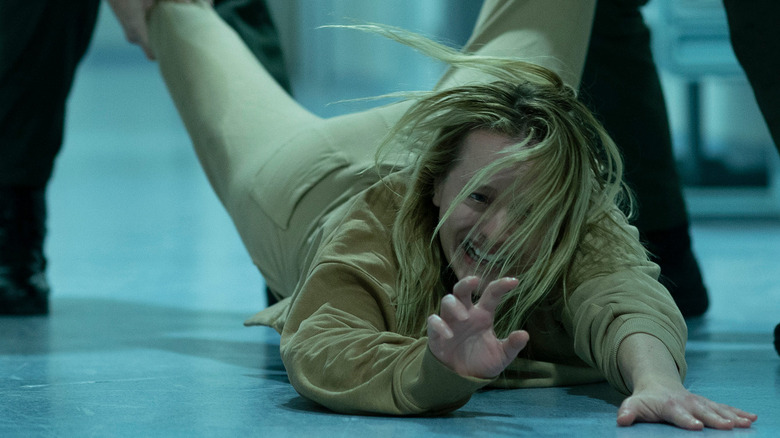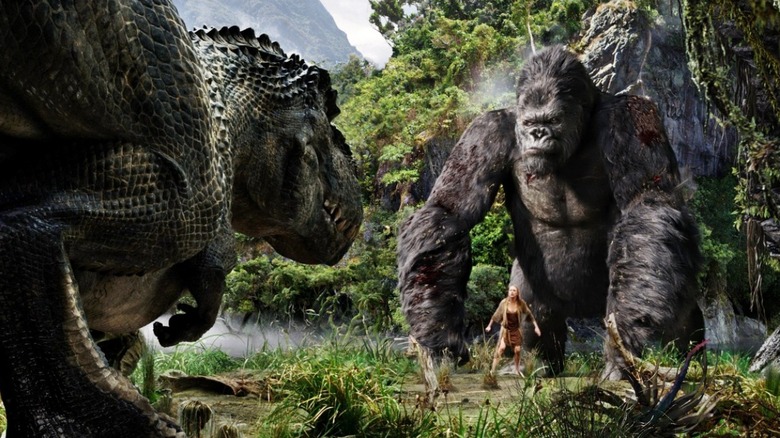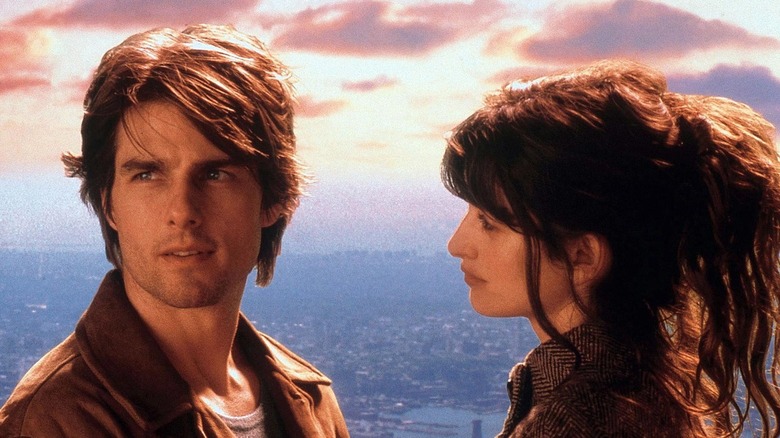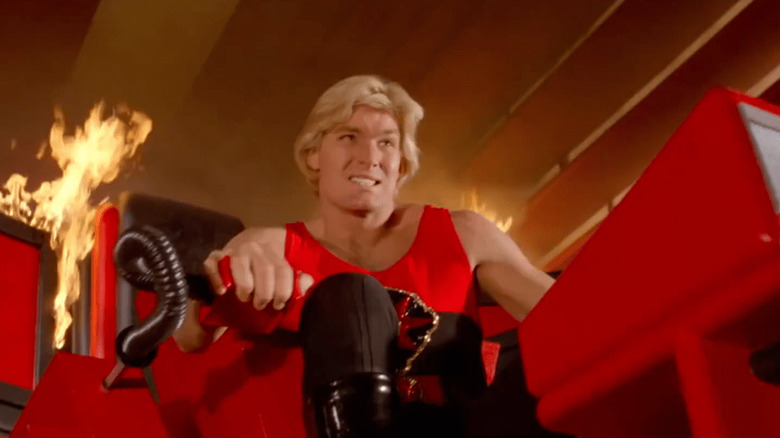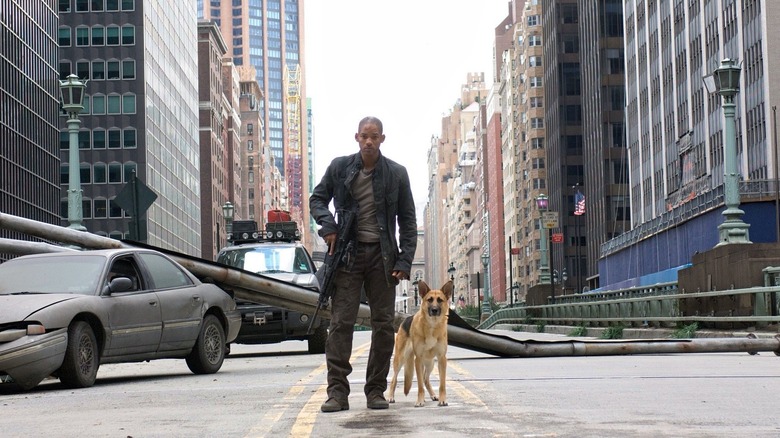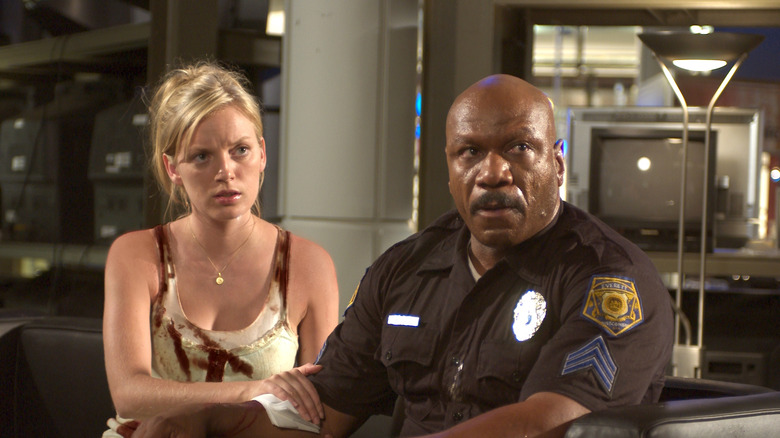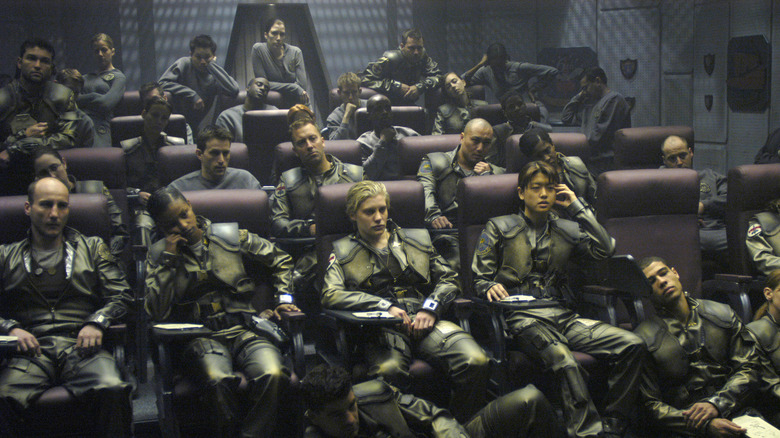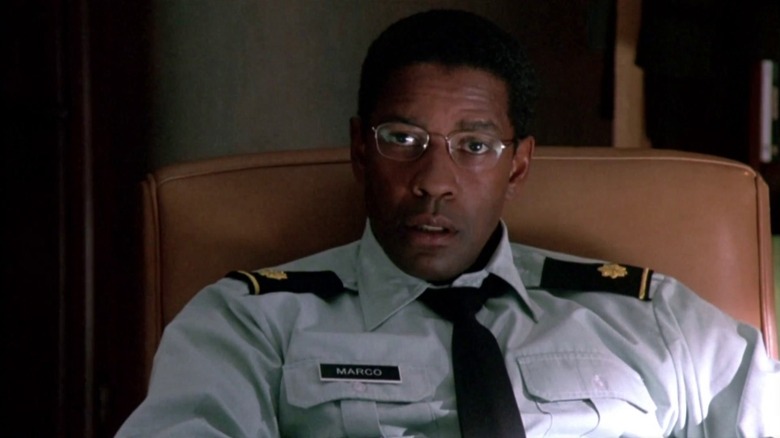Sci-Fi Remakes That Are Better Than The Original
Remaking a classic film is always a dangerous endeavor. If a remake tries too hard to capture the same tone as the original it can feel very repetitive, but stray too far and it's no longer the same story. There has been no shortage of terrible science fiction remakes in recent memory. "The Day The Earth Stood Still" from 2008 paled in comparison to the original because the 1951 version works as a grim warning about the dangers of militarism, while the remake is simply a generic alien invasion movie.
Similarly, 2012's "Total Recall" was a major disappointment. The advancements in computer-generated imagery somehow made the new film look less imaginative than the original, while Paul Verhoeven's 1990 film is still as awe-inspiring and exhilarating today as it was during its initial release. That doesn't mean that remaking a classic is never a good idea. A remake has the opportunity to enhance the visual sensibilities, update the thematic context, or tell the story from a different perspective. These sci-fi remakes are even better than their originals.
The Fly (1986)
The 1958 version of "The Fly" is a perfectly entertaining B-movie with some creative special effects, solid jump scares, and an intriguing gimmick. However, while it's a fun midnight movie to watch if you're into science fiction from the '50s, it isn't necessarily a classic. Notorious cult filmmaker David Cronenberg decided to rework the concept and turn it into a powerful human tragedy with 1986's "The Fly," a more terrifying and emotional film than its predecessor on nearly every level.
Jeff Goldblum stars as Seth Brundle, a brilliant scientist who is convinced that he's discovered a way to transport materials between two chambers. He uses his computer to reproduce organic tissue, which has the potential to radically change medicine and scientific research. However, after his crush, Veronica Quaife (Geena Davis), leaves to visit her ex-boyfriend, Seth begins drinking, and his experiment goes horribly wrong. When Brundle tries to transport himself between two pods, a fly accidentally sneaks into the chamber, and the combination of their DNA begins to slowly turns Seth into the monstrous "Brundlefly." The film shows how he gradually loses his humanity, but instead of using the hulking creature he becomes as the source of cheap jump scares, Cronenberg shows how debilitating disease can be, especially for someone with a work ethic like Brundle's. It's horrifying to watch such a likable character transform into a monster that we no longer recognize.
Solaris (2002)
There is always an inherent danger when American filmmakers choose to remake classic films from another country. If improperly handled, an American remake has the potential to make viewers less interested in the film that inspired it. That certainly wasn't the case when Steven Soderbergh remade Andrei Tarkovsky's beloved space classic "Solaris." His 2002 update captures the same eerie tone and mind-blowing visuals but intertwines the narrative in a slightly more compelling way. It's certainly a close call, but Soderbergh's film is the more rewatchable, emotionally engaging, and thematically rich.
Both versions of "Solaris" are inspired by the 1961 science fiction novel of the same name by author Stanisław Lem. The 2002 film stars George Clooney as the psychologist Dr. Chris Kelvin, who receives a proposal from the corporate body DBA to assist in a mission to the space station Solaris. During his voyage, Kelvin begins having strange visions of his dead wife Rheya (Natascha McElhone) as he starts to lose his grasp on reality. There is a deep sadness to Clooney's performance, and it might just rank among the best of his career. "Solaris" is a film that can be rewatched to dissect its meaning. While the same can be said of the original, the 2002 film is more emotionally compelling because of the doomed relationship between Kelvin and Rheya.
Dune (2021)
While "Dune" readers were excited when "Eraserhead" director David Lynch was hired to direct an adaptation of the first book in the series, the 1984 film fell short of expectations. Even though Lynch is one of the best directors of all time, he was put under creative restraints and did not get to make the film that he intended. Since a director as talented as Lynch couldn't make a good "Dune" movie, some people simply assumed that the novel was "unfilmable."
However, director Denis Villeneuve took a second crack at the material and found much more success. While Lynch's film tried to compress the entire story into one film, Villeneuve chose to split the story into two separate projects. "Dune: Part One" told the first half of the narrative, focusing on Paul Atreides' (Timothee Chalamet) rise as a leader. By giving the audience more time to adjust to the political terminology and world-building, Villeneuve was able to make Paul a more inspiring character. The remake brings each of the novel's stunning locations to life in immaculate detail. Between the incredible action sequences, Greg Fraser's gorgeous cinematography, Hans Zimmer's electrifying score, and the unique costumes and makeup, 2021's "Dune" is one of the most technically impressive films ever made.
War of the Worlds (2005)
George Pal's 1953 take on "War of the Worlds" reimagined the concepts of H.G. Wells' classic novel to explore the chaos of post-World War II America. While that version was revolutionary thanks to its game-changing special effects, it's a film that has definitely aged. Steven Spielberg took another stab at adapting the classic novel in 2005, and as with the 1953 film, Spielberg's version was a response to the current political climate.
In a post-9/11 world, there was nothing more terrifying than the mass destruction of urban centers. Spielberg's film imagined an alien invasion as a terrorist threat that crippled the infrastructure of the world's governments. The smartest decision that Spielberg made during production was when he realized who the true villain should be: Once the world falls into chaos, it's the humans that are the most terrifying. As the struggling father Ray Ferrier (Tom Cruise) tries to bring his daughter (Dakota Fanning) to safety, he realizes that the rest of humanity has descended into savagery.
Invasion of the Body Snatchers (1978)
Similar to 1953's "War of the Worlds," the original "Invasion of the Body Snatchers" from 1956 dealt with some of the relevant political issues of the era. The concept of alien creatures replacing humans may seem silly, but Americans had been suspicious of each other throughout the Cold War. The paranoia over aliens was similar to the search for Communist sympathizers during the "Red Scare." When director Philip Kaufman approached his 1978 remake, he chose to tackle many of the same themes as the 1970s were a decade filled with intense paranoia after a series of political scandals.
Many political thrillers from the era dealt with the theme of being watched. In Kaufman's version, the scientist Matthew Bennell (Donald Sutherland) starts to investigate a mutilated corpse at a mud house. Bennell discovers that a race of extraterrestrials is slowly invading society by taking human form. The film unravels like a procedural thriller and spends time showing the extent of Bennell's research, grounding the story in scientific principles that made the "Pod People" seem like a plausible threat. The use of silence during the climactic sequences contributes to the eerie vibe, and while "Invasion of the Body Snatchers" avoids cheap jump scares it has one of the most chilling final shots in science fiction film history.
12 Monkeys (1995)
The 1962 French short film "La Jetee" is one of the most influential works of time travel fiction. The 28-minute film explores a post-apocalyptic, dystopian version of Paris, following a nameless prisoner (Davos Hanich) who is sent back in time to his childhood before World War III. He becomes obsessed with a childhood memory of an enigmatic woman (Hélène Châtelain) at Orly Airport. The film is brilliant in its simplicity, a story is told almost entirely through still pictures and voiceovers.
Some films work better as shorts and don't need to have their concepts stretched to their limits, but "La Jetee" has an emotional hook in its premise that suits a feature-length adaptation. "Brazil" director Terry Gilliam expanded the story into the science fiction film "12 Monkeys," following a similar prisoner named James Cole (Bruce Willis) who is held captive in a post-apocalyptic version of Philadelphia. Cole is sent back in time to find a cure for a pandemic that has swept the world. It is believed that a group of environmental extremists known as the "Army of the 12 Monkeys" initially released the virus. "12 Monkeys" sustains its premise thanks to Gilliam's visual idiosyncrasies, where not only is the future stark and terrifying, but the present is so eerily realistic that it's even spookier. Willis gives an incredibly emotional performance that ties in beautifully with the film's tragic ending.
Never Say Never Again (1983)
The James Bond franchise is largely considered to be an espionage-centric series, but several installments in the saga have flirted with science fiction concepts. Not every Bond film is as stripped down and gritty as "Casino Royale" or "Skyfall." The films starring Sean Connery feature implausible gadgets that are only explainable by sci-fi terminology. Connery's fourth Bond film titled "Thunderball" featured a motorbike torpedo, an underwater breathing device, a jet pack, and a SPECTRE control panel that electrocutes victims. Due to a strange discrepancy regarding the rights to "Thunderball," Connery reprised his role as Bond in a 1983 remake called "Never Say Never Again" from Warner Brothers.
The issue with the later films within Roger Moore's filmography as Bond is that they didn't acknowledge that the actor had aged. However, "Never Say Never Again" avoided this issue by making Bond's seniority a plot point. He is no longer in his prime, which makes him more vulnerable. "Never Say Never Again" features more exciting submarine battle sequences than "Thunderball," and has a menacing turn from Max von Sydow as Bond's nemesis, Ernst Stavro Blofeld. If you're wondering why the set pieces in "Never Say Never Again" look so great, it's because they were handled by "The Empire Strikes Back" director Irvin Kershner.
Dredd (2012)
The 1995 adaptation of the "Judge Dredd" comic book series is one of the most disappointing superhero movies of all time. Instead of respecting the character's gritty origins, the film turned into a generic Sylvester Stallone action vehicle. The update from 2012 titled simply "Dredd" was an improvement in every way. Pete Travis treated the film as a shocking, 1980s-style action movie with gruesome death sequences and insightful political commentary.
"Dredd" takes place in a dystopian future where police officers serve as judge, jury, and executioner. The veteran Judge Dredd (Karl Urban) reluctantly takes the younger Judge Anderson (Olivia Thirlby) under his wing when he's assigned a drug bust. Dredd and Anderson are sent to break into a massive building where the drug lord Ma-Ma (Lena Headey) has her stronghold where she sells a powerful hallucinatory drug known as "Slo-Mo." The film uses immersive 3D effects to make the violent action scenes even more brutal. However, the film does not condone blind justice, as Urban's Dredd is only willing to kill people if he has no doubts that they are guilty. The inclusion of Anderson gives the audience an emotional hook into the story, as Dredd himself is not a very expressive character.
The Thing (1982)
John Carpenter has redefined nearly every subgenre of science fiction and horror, and 1982's "The Thing" may be the most singular film of his career. A tightly wound masterwork of suspense, action, and some of the most impressive makeup effects in cinema history, "The Thing" was loosely inspired by 1951's "The Thing from Another World." Both films are adaptations of John W. Campbell Jr.'s 1938 novella "Who Goes There?"
"The Thing from Another World" is a perfectly serviceable sci-fi monster movie, but it's not that distinct from the other genre movies of that era. Carpenter's film understood that there is nothing scarier than paranoia as R.J. MacReady (Kurt Russell), Blair (Wilford Brimley), Childs (Keith David), and the other men in the Arctic research station all turn on each other as they question which one of them has been taken over by the mysterious creature. Makeup artist Rob Bottin's practical work in "The Thing" is just as effective today as it was in 1982. In fact, the 2011 prequel, which used a great deal of CGI, was far less scary.
The Invisible Man (2020)
While some audiences might assume that the classic "Universal Monster" movies were all just campy horror flicks, many of the early films from this era were remarkably sensitive and creative. James Whale's 1933 adaptation of H.G. Wells' novel "The Invisible Man" tells the tragic story of a scientist who is trying to cure himself of invisibility.
While Whale's "The Invisible Man" is one of the best of its kind, Leigh Whannell's 2020 remake was able to update the story from a female perspective. In his new version, the titular invisible man is the optics scientist Adrian Griffin (Oliver Jackson-Cohen) who had been abusing his girlfriend Cee (Elisabeth Moss) prior to his mysterious disappearance. Although Griffin is assumed to be dead, Cee discovers that he's used the invisibility suit to cloak his actions. It's absolutely riveting to watch Cee try to explain the situation when no one will believe her. Whannell was able to turn this classic tale into a story about the importance of believing women, and Moss' powerful performance was awards-worthy.
King Kong (2005)
The original 1933 "King Kong" is one of the most influential films of its time. It's a remarkable story of a creature who is taken advantage of and simply wants to be loved. The final line "it was beauty that killed the beast" is one of the most devastating in science fiction movie history.
"King Kong" inspired many future directors to take an interest in filmmaking, particularly Peter Jackson. After completing his work on "The Lord of the Rings" trilogy, Jackson decided to remake his favorite film and flesh out the original story. The two films work beautifully as companion pieces, since Jackson's version is almost two times longer and spends more time developing characters like Ann Darrow (Naomi Watts), Carl Denham (Jack Black), and Jack Driscoll (Adrien Brody). The reason Jackson's film is slightly better is the incredible motion-capture work by Andy Serkis as the titular ape. Serkis was able to add realistic expressions to Kong that make his tragic fate even more heartbreaking.
Vanilla Sky (2001)
Alejandro Amenábar's 1997 Spanish film "Open Your Eyes" is a very complex, emotional examination of the meaning of life. While worthy of analysis for its deeper meaning, it's so emotionally grueling that it's not the type of film that you want to rewatch. American filmmaker Cameron Crowe decided to remake the film with 2001's "Vanilla Sky." Not exactly a filmmaker associated with the science fiction genre, Crowe is best known for his romantic dramedies "Say Anything," "Jerry Maguire," and "Almost Famous."
However, "Vanilla Sky" finds the right blend of genuine emotion, surprising humor, and splendid visuals to make the story of "Open Your Eyes" more entertaining. Tom Cruise brings an idiosyncratic satirical edge to his melodramatic performance as David Aames, almost as if Crowe and Cruise are reflecting upon the meaninglessness of existence. Although "Vanilla Sky" was critically derided during its initial release, it has inspired a cult following that appreciates its baffling ending.
Flash Gordon (1980)
Beginning in 1936, the "Flash Gordon" adventure serials made a huge impact on the science fiction and superhero genres. You can see the influence of the original "Flash Gordon" shorts on many of the most popular science fiction franchises of all-time, particularly the "Star Wars" saga. The three serials "Flash Gordon," "Flash Gordon's Trip To Mars," and "Flash Gordon Conquers The Universe" are necessary watches if you consider yourself to be a sci-fi buff.
After the success of "Star Wars" in 1977, there was more interest in the science fiction genre than ever before. Although the "Flash Gordon" film was only released a few months after "The Empire Strikes Back," it wasn't trying to achieve the same goals. "Flash Gordon" was cheeky, self-aware, absurdly comical, and certainly not trying to "elevate" the material. Sam J. Jones' performance as the titular hero is playfully dull, and it's hilarious to watch Flash fumble around in his own movie. It's really Max von Sydow's eccentric performance as the villain Ming the Merciless that steals the film, as well as the incredible soundtrack by Queen being the icing on the cake.
I Am Legend (2007)
Richard Matheson's 1954 post-apocalyptic novel "I Am Legend" has inspired many different adaptations, including 1964's "The Last Man on Earth" and 1971's "The Omega Man." There's a reason that this story is worth reinventing for different generations since it's a gripping examination of loneliness and the triumph of the human spirit. Francis Lawrence's 2007 adaptation focused on the inspirational quality of the narrative, implying that even when it is on the brink of extinction humanity is able to ensure it has a future.
"I Am Legend" rests on the shoulders of Will Smith, who gives one of the best performances of his career as the U.S. Army virologist Dr. Robert Neville. He is immune to a virus that has swept the world and believes that he is doomed to live alone for the rest of his life. Lawrence beautifully intercuts footage of Neville's daily routine with flashbacks to his life before the virus was unleashed. It's inspiring to see him overcome these tragedies as he searches for other survivors.
Dawn of the Dead (2004)
George A. Romero essentially created the parameters of the zombie movies that we see today. All of the films in the "Living Dead" series are unique in their own way and explore different themes. The 1978 installment "Dawn of the Dead" is a satire of consumerism as it traps a group of human survivors in a mall as they fend off the undead. This idea was even more relevant in the 21st century when American consumerism reached its peak.
Due to real-world developments, Zack Snyder's 2004 remake of "Dawn of the Dead" had more things to satirize. While Snyder isn't a particularly subtle filmmaker, the satirical edges in James Gunn's screenplay poke fun at the shallowness of the characters. There's a mean-spirited nature to the graphic dismemberments that makes the film even more terrifying. While it's best appreciated for its depraved joys, Snyder's "Dawn of the Dead" has an emotional hook thanks to Sarah Polley's empathetic performance as the nurse Ana Clark.
Battlestar Galactica (2004)
Let's be frank: The 1978 science fiction series "Battlestar Galactica" was a cheap rip-off of "Star Wars" that failed to last beyond one season. While the show has its admirers, it hasn't aged well at all, and is largely indistinguishable from the other "Star Wars" knock-offs of the era. However, that doesn't mean that the universe that "Battlestar Galactica" created wasn't an interesting one. Former "Star Trek: The Next Generation" writer Ronald D. Moore revamped the concept into one of the most politically relevant television shows of the 21st century.
Prior to the beginning of the first season, an introductory miniseries fleshed out the franchise's new, improved backstory. Here, the remnants of humanity live in the Twelve Colonies of Kobol after fighting a war with the race of human-like machines known as the Cylons. In the miniseries, the Cylons launch an attack by corrupting the scientist Dr. Gaius Baltar (James Callis), wiping out the bulk of the human race and forcing the survivors to flee to the stars. In the series that follows, the characters must stay one step ahead of their attackers while questioning which one of them is a Cylon, leading to an increased sense of paranoia.
The reboot of "Battlestar Galactica" was an improvement on the original in every way, and even managed to right some of the wrongs of the "Star Wars" franchise. While the "Star Wars" prequel trilogy failed to make its political elements compelling, "Battlestar Galactica" served as a relevant metaphor for Bush-era events.
The Manchurian Candidate (2004)
Although there are hints of implausibility in many political thrillers in the 1960s, "The Manchurian Candidate" features a brain control concept that pushes it into science fiction territory. John Frankenheimer's 1962 film centers on a group of shadowy conspirators from the People's Republic of China and the Soviet Union that plan to assassinate an American presidential nominee by brainwashing the Korean War veteran Raymond Shaw (Laurence Harvey). While it has no shortage of taut sequences of suspense (as all Frankenheimer films do), the inflammatory political angle of "The Manchurian Candidate" hasn't aged well.
This gave director Jonathan Demme material to improve on when he remade the film in 2004. Instead of focusing on an international conspiracy, Demme's "The Manchurian Candidate" deconstructed corruption within American political parties. U.S. Senator Eleanor Prentiss Shaw (Meryl Streep) manipulates her son Raymond (Liev Schreiber) into becoming a vice-presidential nominee. Raymond's fellow serviceman, Bennett Marco (Denzel Washington), is convinced that they were brainwashed during their service in the Gulf War. It's a very unique performance from Washington, as he's less confident than the characters he usually portrays. Streep even gets the rare chance to play the villain.
